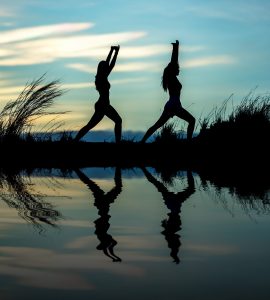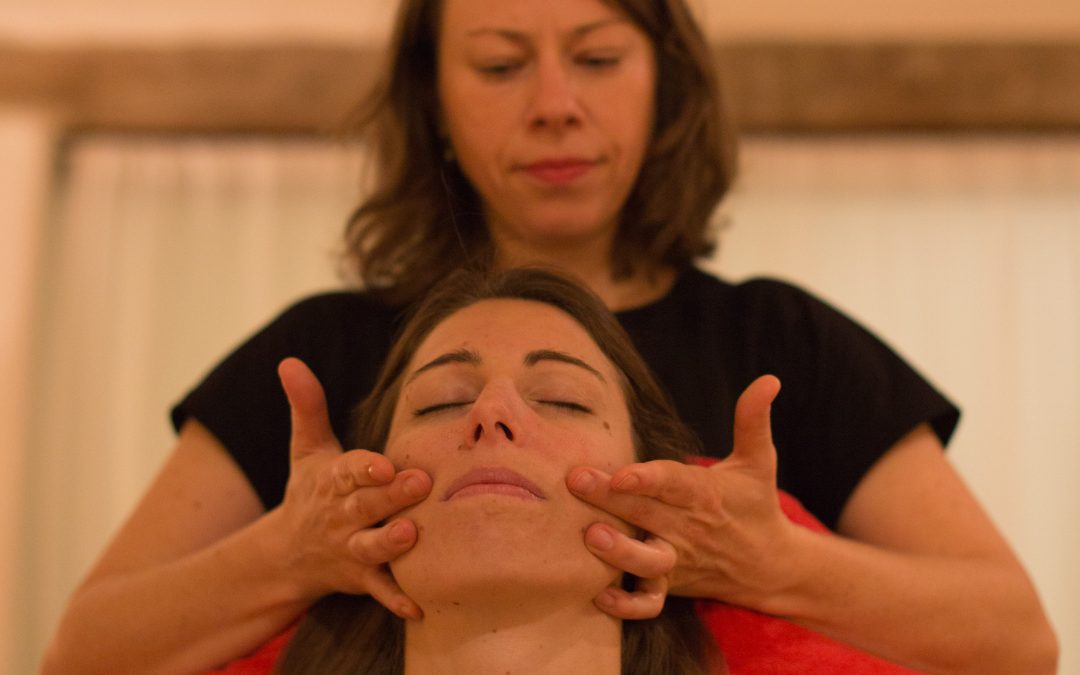We find out from Cath Mowbray exactly what an Indian Head Massage involves and how it could help you
What exactly is Indian Head Massage?
Indian Head Massage (IHM) is a seated massage that starts on the shoulders and upper back, then moves to the back of the arms, the hands, then the neck and face, and ending with the scalp.
What would a treatment involve?
You would just need to take off the clothes on the top half of your body, leaving your underwear on. I would then wrap a towel around you as if you’ve just got out of a bath. You would sit on the chair that is supported but comfortable, with a cushion placed on your lap for your hands to rest on, ready for the massage to begin.
So how is it different to other types of massage?
As it is a seated massage, it suits people who don’t want to get undressed, or people who prefer to be seated. Maybe they have mobility issues, are pregnant, are elderly. Or it could also be more suitable for someone with less time. An Indian Head Massage also means that I can do a facial massage and a head massage that has more variety than what would be involved in an ordinary massage.
What massage techniques are involved?
The massage techniques used include Swedish style. This is known as effleurage, which essentially involves long strokes that warm the body up and prepare it for deeper work, so I would start with that. Another technique I would use is acupressure, which involves thumb pressure down the spine, and on the edge of bony areas, such as around the scapula and shoulder blade.
What benefits will it bring?
It can release muscle tension and spasms more powerfully in this area than a lying-down massage. This is because, as the therapist, I can fully access the head, can stand behind the client and support their head with a pillow between you and them, so they can fully relax.
So what does the pressure-point work do?
The pressure points I work on clear congestion in the nerve pathways, relieve pain in tense muscles, relieve sinus congestion, encourage lymph drainage, increase circulation to that local area, and restore energy balance to the body.
Where did this form of massage originate from?
As the name suggests, it started in India. There, massage is a part of their everyday lifestyle. Holistic Ayurvedic is part of their healthcare system, and this approach to taking care of their wellbeing is passed down through generations. Indian Head Massage is essentially a westernised version of this, adapted to suit the western lifestyle.
What first got you interested in Indian Head Massage?
I had completed my initial one-year holistic massage therapy course and was keen to expand on my skill set and learn a new treatment that I could offer to a wider range of clients.
How long does a session last, and why is it shorter than a more general massage?
It can be either a half-hour or 45-minute session. It is shorter than a normal massage treatment, because it is not a full body massage.
What type of information do you ask the patient for before starting the treatment?
In the consultation before the treatment I would establish any health issues that the client may have so I can take account of this in the session.
What sort of conditions could Indian Head Massage help with?

What do you as the practitioner actually experience that gives you indicators from the head as to what is going on?
You can tell if someone is relaxed or not. If they are not relaxed, then their eyes aren’t closed, their body feels stiff. A part of the massage is on the arms and hands, so when I move the arms and find they are holding the movement themselves, that also shows they are not fully relaxed.
What will the patient feel and experience during a session?
The aim is that they experience a sense of calm. Many people find the head part of the massage – where I use a variety of techniques, including percussion (which is a tapping-type movement), and other more invigorating techniques – can be quite uplifting. Hopefully, they will walk away feeling energised. Obviously, this will depend on the individual, where they’re at, whether they are tired, able to switch off and let go and so on. But this is the general aim.
Can Indian Head Massage also help with mental health, emotional issues, and also with rejuvenating the mind? If so, how?
For mild depression and low mood, IHM can help to decrease stimulation of the central nervous system, which reduces stress and anxiety. It also works to stimulate the parasympathetic nervous system, which promotes rest and relaxation. By also stimulating the release of endorphins in the brain this then elevates the mood.
Do you have a specific style of IHM that you use?
I will work with the individual. Also, I don’t use a lot of oil on the hair, whereas traditional Indian treatments do. That is an optional part of the treatment, so I don’t add oil to the hair unless a client wants that. So they can, for example, go back to work afterwards.
What about more unusual conditions that it can help with?
It is known to help with hair growth. By stimulating the follicles, this increases circulation to the scalp, which promotes healthy hair growth and improves the condition of the hair.
Are there any situations where Indian Head Massage is not advisable?
Yes, there are some conditions that contraindicate the treatment. For example, if you were in the middle of a migraine attack, feeling unwell, had low blood pressure. This is because during massage in general your blood pressure drops as you relax, which if you are in a sitting position and it drops too much could make you feel faint. It is also not suitable for certain skin conditions. But these are all issues that I would discuss with the client in the consultation before the treatment begins.
Do you give any feedback to clients about what you discover, and/or any other self-help advice?

What for you is the most powerful aspect of Indian Head Massage and how it works?
It is accessible – you can just do it in a chair, and as such it can be done on the go. It is suitable for lots of situations, and doesn’t require any specialist equipment.
What one thing would you say to someone who has never tried Indian Head Massage to share with them the benefits of what it can bring? What about for those apprehensive about trying it?
It would suit someone who hasn’t had a massage before, who is concerned about undressing, nervous about what it might involve. It could be a perfect introduction to something new – so why not book yourself in!
Cost: £25 for 30 minutes
Special offers: book 5 appointments, get 6th one free; 20% discount if you refer a friend; 20% discount for NHS staff and students
To book an appointment, contact the Alma Vale Centre on 0117 3771186. Or if you would like to speak with Cath directly, you can call her on 07963 720733, or visit her website: www.cathmowbraymassage.co.uk






